Here’s a secret: SMS marketing isn’t a quick win. That idea is one of the more prevalent SMS marketing myths.
And here’s the first SMS marketing hot take of more to come: Marketers are getting a lot wrong with SMS today.
But that doesn’t mean it can’t get better.
Here are 8 overarching SMS best practices from 17 experts for how to text your subscribers without annoying them—and, eventually, turn them into loyal customers for life.
1. Differentiate email from SMS
“Everybody says this, yet few listen: Don’t treat SMS like email,” says Casey Armstrong, CMO of ShipBob.
Everybody says this, yet few listen: Don’t treat SMS like email.
As owned marketing channels, SMS and email share similarities. But to be successful, you have to understand how the expectations of your SMS subscribers differ from those of your email subscribers.
You shouldn’t be sending a shorter version of your email to customers via text. And sending those messages at the exact same time? You can do better.
Here are a few ways to ensure you’re differentiating email and SMS in your digital marketing strategy, according to the SMS experts.
Reserve SMS for urgent, time-sensitive content
If you’re doing SMS marketing with the intention of copy and pasting your email campaigns over to text, you’re not going to get the results you’re looking for—at least not for long.
SMS can’t be the same wording, and it shouldn’t be sent at the same time. It’s a whole new angle—a whole new channel with different touchpoints.
According to Klaviyo’s consumer sentiment report, 39% of people will unsubscribe if they receive the same message via both email and SMS.
“SMS can’t be the same wording, and it shouldn’t be sent at the same time,” says Elliot Scott, founder and CEO of London-based retention agency ElliotDigital. “It’s a whole new angle—a whole new channel with different touchpoints.”
SMS hot take: “If someone has their notifications turned on and they get the same message in two channels at the same time, they’re going to unsubscribe from one—and it’s probably going to be SMS.”
When you have a unified email and SMS marketing platform, you have the innate ability to implement texts and emails as part of the same automation—which means you can space out your texts and emails more strategically.
But how do you decide what channel to send on and when? Jason Anderson, COO at Andzen, emphasizes that SMS should take priority over email whenever there’s a time-sensitive or urgent message, like a flash sale or a discount code expiring.
Wondering how to implement this in your pre-existing flows? Here’s how to think about it with 3 core marketing automations:
- Abandoned cart: Send a first cart check-out reminder via email, then follow up via text with anyone who still hasn’t purchased, or vice versa.
- Welcome messages: Welcome your subscriber to the brand via SMS, then send nurture content like blogs, product information, and the brand story via email. If they subscribe to receive a coupon code, send a 24-hour reminder text when the coupon code is expiring.
- Post-purchase: Use transactional SMS to relay order confirmation and delivery notifications, then thank the customer for their order via email once they receive it.
Automations that are inherently time-sensitive, meanwhile, may work better over text than email, period:
- Inventory alerts: From low-in-stock flows to back-in-stock flows, automations that alert subscribers to the availability of the products they want are ideal for SMS because they relay timely information shoppers may want to act on immediately.
- Replenishment: Using predictive analytics in a platform like Klaviyo, you can trigger stock-up reminder texts to send right as customers are likely to run out of a product.
Anderson emphasizes that it’s important to put yourself in the subscriber’s shoes when it comes to deciding which is the best promotional channel to use and when.
“What’s an instance where a subscriber would be disappointed if they didn’t receive a message? Think about it through that lens. If you had a coupon code that was going to expire and you forgot about it, you’d be disappointed,” Anderson points out.
Don’t sound like a robot
Consumer behavior has evolved to the point where we expect to see marketing messages in our email inboxes. When we receive a text, on the other hand, we expect it to come from a friend—or at least sound like it’s coming from one.
Think about how you text your friends. Then do that.
“Think about how you text your friends,” Armstrong advises. “Then do that.”
Stay true to your brand’s tone and voice, but use more conversational language over text than you would over email. It might even be worth experimenting with texts that come from the founder or someone else on the team, so that they sound more human.
SMS hot take: “People are smart. When they see, ‘Text stop to opt out,’ they know it’s not a person sending a text message. But you should still make it sound like it is.”
At ethical jewelry brand Dana Rebecca Designs, a tone that’s “maybe more cheeky and relatable” works better on SMS than it does on email.
“We try to be consistent with our brand voice throughout all our channels, but where we’re leaning into SMS more than email is the kind of language we see people responding to through our Instagram stories,” explains Blair Peterson, VP of strategy. “People are looking for information when they’re opening an email. On SMS, they want you to be real, transparent, and to the point.”
Similarly, the team at AMB Interactive uses SMS as an opportunity to take a more playful and organic approach to marketing with their client The Woobles, a brand that offers crochet kits.
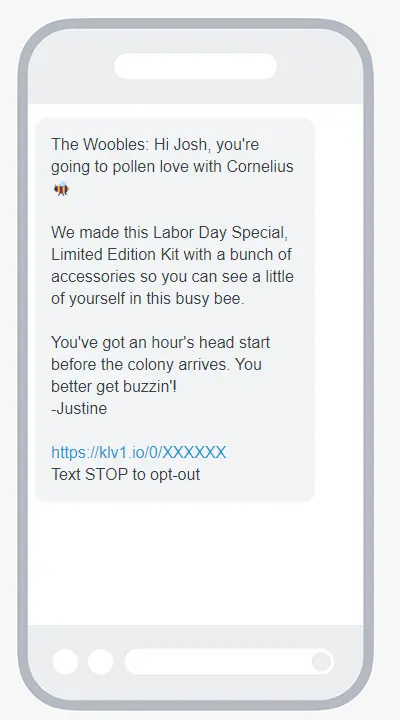
“The Woobles’ brand is so unique, and we want to keep their audience highly engaged on SMS. We’ve observed that people love these witty and fun little messages we send,” says Josh Behr, CEO and founder of AMB Interactive.
“They look forward to getting another quirky text about Henri the frog or Bubbles the elephant, and they end up making repeat purchases because of it—ultimately resulting in a higher lifetime value,” Behr adds.
Keep it all in one platform
If you want to leverage both SMS and email to the best of your ability, Ben Zettler, digital marketing and ecommerce consultant at Ben Zettler Digital, urges you to consider using a unified platform rather than separate point solutions.
Keeping SMS and email living within one platform is just as important as doing SMS at all.
“Keeping SMS and email living within one platform is just as important as doing SMS at all. This is how you store all your data within a single user profile, so that you can then use it to leverage for the purposes of segmentation,” Zettler explains.
Let’s say you want to text users who’ve opened 3 emails in the last month and also placed an order. “I’m not going to be able to do that unless I have Klaviyo for both email and SMS,” Zettler says.
SMS hot take: “When brands use a separate software for SMS, they end up replicating what they’re saying on the email side. That generally leads to lower engagement in one of the two channels—and a higher unsubscribe rate.”
Brandon Amoroso, founder and CEO of Electriq, believes the biggest mistake marketers make with SMS is not keeping email and SMS in one platform.
“When you’re using separate platforms for email and SMS, it takes attention to detail and an advanced understanding of the integration between both platforms in order to have a successful messaging strategy early on,” Amoroso explains.
2. Make it a no-brainer for people to sign up for SMS—and stay subscribed
SMS experts agree that when it comes to making people want to subscribe—and stay subscribed—to text message marketing, most marketers are currently overlooking opportunities.
But it doesn’t have to be that way. Here are a few ways to make it easy and worthwhile for shoppers to opt in to your SMS offering—without eventually responding “STOP.”
Explore creative ways to grow your SMS list
Many brands provide the option for shoppers to opt in to marketing communications via pop-up forms.
The pop-up is such a major portion of your list growth that you really have to nail that piece of it.
“The pop-up is such a major portion of your list growth that you really have to nail that piece of it,” says Jacob Sappington, head of email at ecommerce growth marketing agency Homestead Studio, who recommends using multi-step forms that collect email addresses first, then ask for SMS on the second screen.
But especially if your SMS program has been around for a while, “pop-ups aren’t really moving the needle in terms of sign-ups,” Peterson points out. “You have to get a little more creative.”
When Dana Rebecca Designs first launched their SMS program, they offered giveaways and other incentives for new SMS subscribers, like selecting someone who just signed up for SMS and sending them a free jewelry cleaner kit—no purchase required.
Cross-channel promotion helps with those kinds of giveaways, Peterson observes: “We really leaned into talking about that on social. So at the beginning of the month, we’d post about how we were going to pick somebody this month who signs up, and then at the end of the month we’d announce the winner.”
Amoroso suggests a few more creative ways to grow your SMS list:
- Give people the option to sign up for SMS when they place an order.
- Put QR codes in your packing, making it easy for customers to sign up for texts.
- Allow people to sign up for texts through Instagram stories.
Encourage your email subscribers to join SMS, too
You can also create an invitational email campaign segmented to email-only subscribers, encouraging them to opt in to texts. Because your email subscribers already care about your brand, they’re probably more likely than random website visitors to become engaged SMS subscribers.
“These are people who are already in our CRM, who are already in our funnel,” Sappington points out. “They’re willing to be a little bit deeper ingrained in your business because you have something to offer that they like.”
Amoroso, for example, invites Soylent’s email subscribers to sign up for SMS in order to be the first to know when new flavors drop.
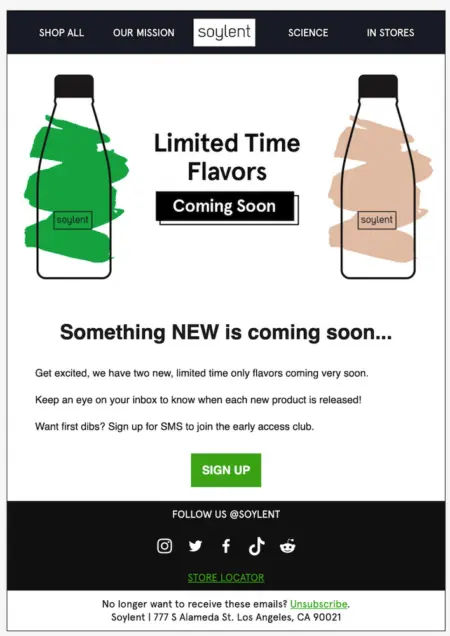
Customers of Andzen client Cheeky Chickadee also get amped about product launches—so Andzen incorporates them into their list-building strategy.
“To create hype around new season launches, we’ll send a teaser email alerting customers that a new collection is dropping soon—but we won’t always reveal the details,” explains Natasha Hanley, copywriter at Andzen.
“To play into the hype, we let email subscribers know that if they opt in to SMS, they’ll receive early access to shop the drop,” Hanley explains. “This creates a sense of exclusivity and gives customers a great reason to opt in to SMS.”
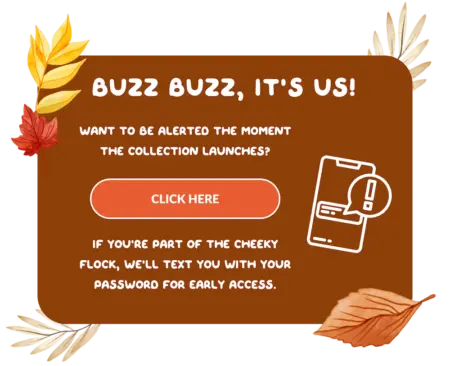
Make shoppers an offer they can’t refuse
More than any other sign-up strategy, this one’s the most important, Sappington says: “There needs to be a strong reason for them to get on your list. If you’re just saying, ‘Hey, join our list,’ it’s going to fall flat. People don’t sign up unless you give them a reason to.”
People don’t sign up unless you give them a reason to.
One strong reason: promising SMS subscribers VIP treatment.
According to Klaviyo’s consumer sentiment survey, SMS subscribers want to feel like they’re part of a special group—but 20% of them don’t feel like the texts they currently receive from brands are delivering.
The following messages would fix that, consumers report:
- Invitations to VIP experiences: 38%
- Loyalty programs and benefits: 36%
- Birthday deals: 34%
VIP-style SMS lists give customers a sense of connection they can’t find when browsing your site alone. Exclusives and behind-the-scenes looks tap into the idea that the customer is an insider with a unique relationship with the brand.
And you don’t have to keep it a secret, either—when they’re signing up for texts, let shoppers know they’ll receive exclusive offers and early access to content they wouldn’t receive otherwise.
“Build exclusivity around the channel,” Amoroso suggests. “Whether it’s content, pre-order access, exclusive access to new products, insider tips, or something else, give people a reason to sign up for SMS other than just offering a discount.”
Be patient
“SMS is a more intrusive channel, so it’s rare to go from 0 to 100K overnight,” says Morgan Mulloy, associate director of email marketing at Avex Designs. “Just like a new plant, your SMS list needs nurturing.”
Just like a new plant, your SMS list needs nurturing.
“The payoff,” Mulloy adds, “will be worth it.”
3. SMS content: stick to the essentials
How long should your text messages be? To emoji or not to emoji? Should you spend the extra money on MMS? Where should your links appear in the text message, and where should they land subscribers?
In addition to asking the experts, we recently took a deep dive into data from Klaviyo, analyzing roughly 50K SMS campaigns across 5K companies in order to find answers to questions like these.
Before we dive in, a caveat: This data only reveals basic rules of thumb. Everyone’s niche is different. Before making any hard decisions about your SMS marketing strategy, be sure to A/B test different variables on your own (more on A/B testing later).
Copy: keep it short and sweet
Klaviyo’s data reveals a clear trend in higher click rates for texts of fewer than 50 characters, at about 12%.
However, you’ll notice diminishing returns. After about 150 characters, customers stop dropping off—suggesting that while shorter messages have higher click rates, if you have something important to say, a longer SMS message can still work.
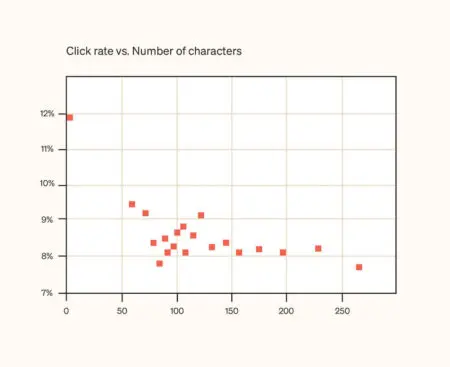
Since smartphone users are so quick to scan texts, we wondered if the data would look different if we isolated a different variable: the number of lines.
Turns out that no matter how you measure it—via number of lines or character count—the results are largely the same.
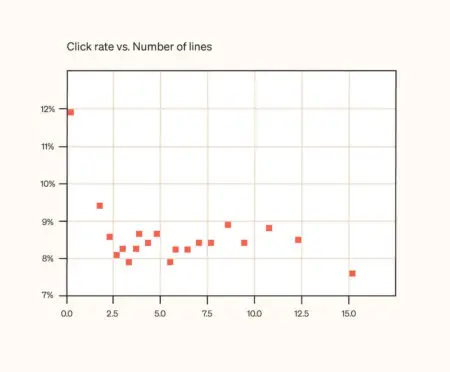
Emojis: only if they make sense for your vertical
When we ran the numbers, we found a slight bias against using emojis: Click rates average 10.4% on texts with emojis and 11.21% on texts without them. In other words, skipping the emojis boosts click rates by about .8%.
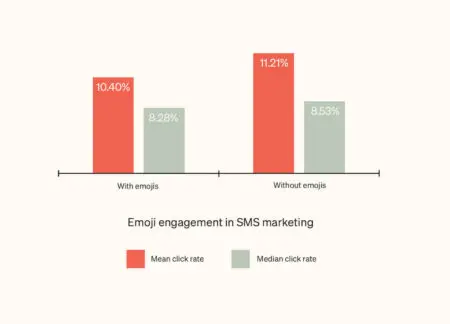
But here’s why we won’t make it a hard rule: When we ran A/B tests with multiple SMS text variations, we found that 53% of the time, the variations with emojis performed better.
The takeaway: Emojis generally don’t improve click rates, but they’re worth testing if you’re unsure about your niche or if the content calls for one.
If you’re selling back-to-school supplies, for example, emojis might be common practice—customers might even expect them. If you’re trying to get customers to sign up for Roth IRAs, maybe not so much.
SMS vs. MMS: choose wisely
Sappington says Homestead is typically an “SMS-first agency” for two key reasons: First, depending on your SMS marketing platform, MMS can be quite a bit more expensive. And second, the numbers show that MMS may not be worth the extra expense.
“We’ve tested it time and time again, and we see that SMS and MMS have about the same conversion rate,” Sappington explains. “Sometimes SMS is even favored.”
We’ve tested it time and time again, and we see that SMS and MMS have about the same conversion rate. Sometimes SMS is even favored.
Tracking SMS vs. MMS message performance has not revealed a clear winner for Dana Rebecca Designs, Peterson says. “Depending on the messaging, sometimes we see that just text does better,” Peterson says. “But that’s still something we’re playing around with.”
In general, Peterson has found that “if you have a more emotional text, or if it’s more educational, you don’t need an image because it’s more about where you’re sending them to find out more.”
By contrast, “when it’s more product-based, or if it’s our top picks, that’s where you need the image to grab them,” Peterson says.
“Times when it makes sense to go with an MMS would be if it’s a very visually aesthetic product, and that is the main reason why someone would buy,” Sappington agrees. “Visually beautiful products, or products you’re texting about as part of the hype-building process, to show someone using it in action.”
SMS hot take: “I’m usually telling the team, ‘Don’t force an image.’ If we are trying to be funny and quippy, let the copy speak for itself.”
Be smart about link placement
Does it matter where you paste a link into your SMS message? When the Klaviyo SMS data science team ran the numbers, the initial data plot was similar to the chart for number of characters above.
In other words, it’s hard to isolate link location as a variable independent of message length, because the longer the message, the farther the words push the link toward the end.
We think this is because we initially measured the number of characters before the first link. So we changed strategies. Instead, we examined whether the link appeared within the first 5 characters.
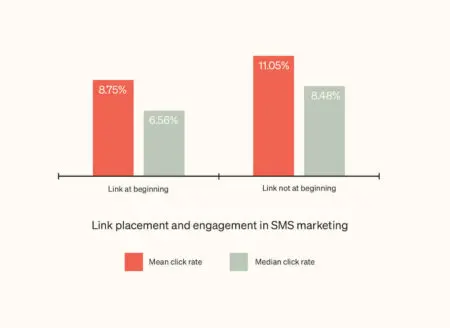
Conclusion? Starting off on a conversational note before asking for the click results in a noticeable difference in CTRs, even with a limited sample size.
“Picture yourself shopping in a brick-and-mortar retail store. The business owner pops in your face and shouts, ‘20% OFF ENDS TONIGHT. Hurry! Shop now!’ Would you like that? Probably not,” points out Connie Cen, founder of Rocketeer Media.
Picture yourself shopping in a brick-and-mortar retail store. The business owner pops in your face and shouts, ‘20% OFF ENDS TONIGHT. Hurry! Shop now!’ Would you like that? Probably not.
“To build a deeper relationship with your customers via SMS, talk as if you’re talking to someone in real life,” Cen suggests. “No fluff. No exaggeration. Just plain, simple, human interaction. This trumps all the marketing tactics out there.”
Here’s a great example from activewear brand Q Collective—the text strikes up a conversational tone before explaining the opportunity and directing the subscriber to check out the sale.
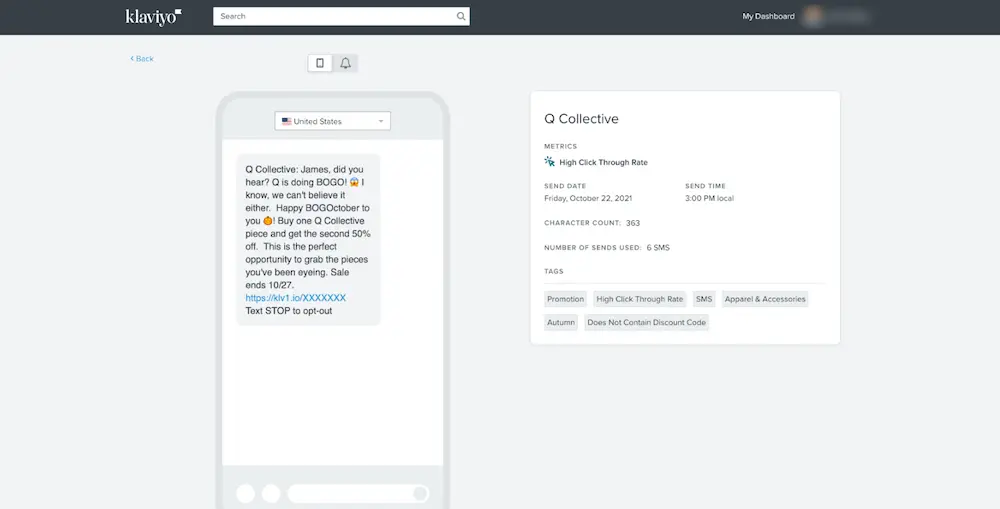
A final word on SMS link placement: If you’re using an unsubscribe link instead of an opt-out keyword, remember to keep it plenty separate from your CTA link. “We try to space out those links so there’s no accidental clicking, where someone means to click through to the website but accidentally opts out,” Scott says.
Link destination matters, too
“It’s super important to make the link destination feel curated to whatever the message is,” Peterson says—which is why Dana Rebecca Designs creates unique, tailored landing pages and links to them in SMS messages.
It’s super important to make the link destination feel curated to whatever the message is.
For example, “if it’s a message about earrings, we’ll send them to the best-selling earrings page, rather than just the best-selling jewelry page,” Peterson says.
“If you’re talking about a specific product, push them to that product page or to a landing page specific to that product,” Sappington agrees. “If you’re talking about a couple of items, drop them on a new arrivals or best-sellers collection.”
SMS hot take: “Ensure the premise you set up in your SMS is fulfilled by the content on the landing page once subscribers click through. The same brand elements and messaging need to appear across the experience from email to site, and from SMS to site.”
The only time Sappington recommends including a link to your homepage is if you’re sending a text that doesn’t include an immediate CTA—for example, a reminder that a new product is dropping in 2 days and SMS subscribers will have early access.
“In that case, there’s nothing the user can do right now. But as long as I’m being concise with my messages, it doesn’t cost me any extra to drop a link on there,” Sappington points out. “That’s when I’d link to a homepage, just to give them that easy avenue to visit the site if they feel like browsing, instead of making them pull up Safari and type in the website.”
“It’s just making it a little easier for them, even if I don’t have anything to sell them right now,” Sappington adds.
4. Personalize whenever possible
In Klaviyo’s consumer sentiment survey, personalization was a common thread for subscribers when identifying which messages they like receiving from brands:
- Discounts tailored to their past purchases: 48%
- Special offers related to their unique interests: 43%
- Messages about products and services they’re interested in: 39%
Meanwhile, over half of consumers say they’ll unsubscribe from text messages if they receive too many messages on topics or products they’re not interested in—and half will unsubscribe if they receive messages that don’t seem like they were intended for them.
Amoroso sums this data up nicely: “Personalization is, by far, the most important component of a successful SMS strategy.”
Personalization is, by far, the most important component of a successful SMS strategy.
“Personalization is important with email marketing too, but with email, you get away with a lot more because it’s not as personal or in-your-face as text messages,” Amoroso explains. “The feedback loop is much tighter with SMS—if you don’t personalize your text messages, you’ll quickly see high unsubscribe rates and complaints. With email, people tend to just delete messages, and there’s not the same level of scrutiny.”
But personalization can mean different things to different marketers. It’s important to distinguish between basic SMS personalization tactics—like using someone’s first name in a text—and a more thoughtful strategy that forefronts customer data and needs.
Basic personalization: template tags
In SMS, using template tags, which automatically fill in customer details like first names, is similar to baseline personalization in email marketing.
According to Klaviyo data, personalizing SMS messages increases click rates by almost 2%.
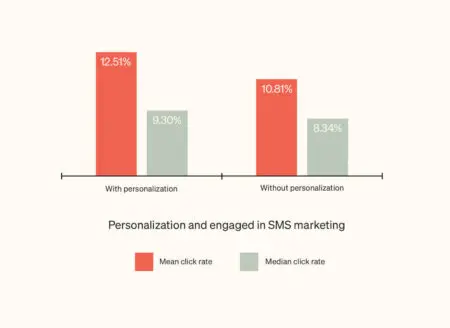
But this kind of personalization also has limited effects. When we ran A/B tests to test personalization exclusively, texts personalized with first names won 64% of the time—revealing only a slight 0.8% advantage.
Template tags are common—which means customers are getting used to them. True SMS personalization goes beyond a first name.
Advanced personalization: segment, segment, segment
How can you take SMS personalization to the next level? By incorporating more precise customer segmentation into your SMS messages—something Scott says is “hugely neglected” in the industry right now.
Segmenting SMS lists allows brands to craft messages that are tailored to each segment, making them more likely to be successful.
“Just like with email, brands should take advantage of segmentation to create customer cohorts based on interests or behaviors,” says Samantha Santana, digital marketing strategist at IM Digital. “Segmenting SMS lists allows brands to craft messages that are tailored to each segment, making them more likely to be successful.”
For Amoroso, personalization is about combining Customer-First Data™—the combination of zero- and first-party data—into segments. He encourages marketers to consider the following criteria to create more defined segments and, ultimately, better personalize the content of each send:
- Products ordered
- Last order date
- Demographic data
- Subscriber status
- Quiz or survey responses
Remember, too, that the more SMS integrations you have, the more data you can leverage in your SMS communications. By integrating your marketing tools into Klaviyo and using that ecosystem of data to power your SMS experiences, you can get more out of your tech stack.
Anderson suggests “thinking about SMS as a channel, and Klaviyo as your central tool.” The Andzen team, for example, pairs their clients’ existing tech stack with Klaviyo SMS to:
- Collect reviews.
- Remind customers of recurring subscriptions.
- Rewards influencers for social sharing.
“Rather than sending out the same campaign for an upcoming sale to everyone, pick a data point and use it to inform different segments,” Amoroso suggests.
He provides this example: “Let’s say it’s a skin care quiz, and the 3 skin concerns are dry skin, acne, and uneven skin texture. You could send out the same campaign to your subscriber list, but depending on which of those 3 answers were chosen in the quiz, you could tailor the copy and the first product that shows up in the text to each segment.”
Instead of highlighting your facial cleanser for someone whose top concern is uneven skin texture, then, you highlight a product that solves each person’s specific issue. “For people whose skin concern was acne, you would lead with an acne cream,” Amoroso says. “That’s how you can make it more personal.”

Dana Rebecca Designs, similarly, tailors SMS automations based on customers’ past browsing and purchase behavior, from jewelry category to price point.
For example, “if a first-time shopper abandons bracelets, we’re going to send them an SMS about bracelets, and maybe we’ll focus on bracelets under $500, because that would be the easiest way to capture them in the beginning,” Peterson explains.
SMS hot take: “Don’t try to collect a bunch of data if you’re not going to actually use it. A lot of marketers try to get as much data as possible, and then don’t do anything with it, in which case, what’s the point? If you’re not going to use the data, why have people fill out a multi-question quiz?”
5. Move beyond the discount
One pattern SMS experts are noticing: Too many marketers are using SMS solely as a way to communicate sales, and they’re not diversifying their content enough.
“Each of your brand’s text messages come from the same phone number, so you need to tell a continuous story, since people can scroll up and see what all the other text messages were,” points out Phil Sblendorio, CRO at AMB Interactive.
When your content is too much of the same on SMS, it becomes glaringly obvious to subscribers when they look at the conversation—or lack thereof.
This is where you need to get creative when nurturing through SMS while driving revenue in a less obvious way.
“There’s one company I always get messages from, and everything is sale, sale, sale, sale. It’s training me to never buy anything unless they send me a text for a sale. If you go back and look at your texts, and all the messages are the same, what’s the point?” says Sblendorio. “This is where you need to get creative when nurturing through SMS while driving revenue in a less obvious way.”
“When a brand hits me with a sale every week, as soon as I see that number, I already know what it’s about. It’s nothing exciting. I don’t even read it anymore. I don’t feel any connection to the brand, and it no longer makes me want to click and buy,” Sblendorio adds.
Prioritize engagement over revenue
Remember: Email language should not equal SMS language. “You need to figure out how people want to be spoken to and through which channel,” Peterson emphasizes. “With SMS, it’s more often about measuring success based on level of engagement vs. revenue.”
For example, “we might send an SMS that says something like, ‘We get it—it’s Monday and it’s January. Shop around on the site, brighten your day a little,’” Peterson says. “It’s just trying to be real, and knowing that’s probably not a revenue play—it’s an engagement play.”
We want subscribers to think, ‘Oh, that’s funny,’ or ‘I can relate to that,’ so the next time they do want to make a purchase, they think of us.
“We want subscribers to think, ‘Oh, that’s funny,’ or ‘I can relate to that,’ so the next time they do want to make a purchase, they think of us,” Peterson adds.
You can only have a real conversation if you sometimes ditch the salesperson-customer relationship. Yes, you’re selling products to customers, so at some point, you’re going to have to make the sale. But your SMS messages will feel more genuine if you bring something else to the table—something of value that serves as a convenient excuse for reaching out.
Scott says it’s about finding “those odd little angles people don’t expect when they open a text from a business. You want them to think, ‘Oh, cool—they’re not trying to sell me something.’ Brands should be doing that more. Even the big brands.”
Rather than inundating your subscribers with the same promotions repeatedly, mix it up by providing value in a different way, such as:
- Providing tips and tricks, or other relevant content
- Sharing fun memes, pictures, or GIFs
- Sending customer testimonials or product reviews
- Announcing the launch of a new product, collection, or influencer collaboration
- Hosting a giveaway, contest, or event
- Replenishment reminders
- Encouraging subscribers to engage with your online store on social media
SMS hot take: “Marketers who send the same types of promotional texts over and over again are just abusing the channel and ruining it for both marketers and the audiences. This is the opportunity to build loyalty and have more intimate communication with the customer.”
Reward loyal customers
Once you earn a shopper’s phone number, it’s important to continue to provide value and keep repeat customers happy. If you can make your subscribers feel like they aren’t just another phone number on your SMS list, you’re more likely to earn loyal subscribers for life.
Zettler has experimented with creating exclusive experiences for SMS subscribers by teasing an announcement and then setting up a flash sale. This tactic yielded incredible results for nutrition brand Promix.
During the one-hour window where the sale was only accessible via text, the message below earned the highest SMS click rate for a campaign in the Promix history—even beating their Black Friday sale announcement on last-click attributed revenue by 4x.
Image source: Ben Zettler Digital
Alt text: Image shows a flash sale announcement text from Promix.
SMS hot take: “Too many marketers doing SMS today think that in order to grow your list, you need to offer a first purchase discount, and they revolve their strategy around that. You don’t have to. And the more you rely solely on discounting as a way to earn subscribers, the more churn you’re going to have.”
For their client Little Party Dress, the Andzen team segments subscribers into 4 loyalty tiers to reward the brand’s best customers. The loyalty program, Club LPD, was created to replicate the feeling of an exclusive nightclub that doesn’t let you in unless you’re on the guest list.
“We send early-access SMS marketing campaigns for their biggest launches and events, like Black Friday Cyber Monday, and we stagger it by loyalty program tier, so the higher up you are in Club LPD, the earlier access you get,” Hanley explains.
“Customers in the top loyalty tier, the VIP Lounge, are often given access 24 hours before members of the lowest 3 tiers,” she adds.
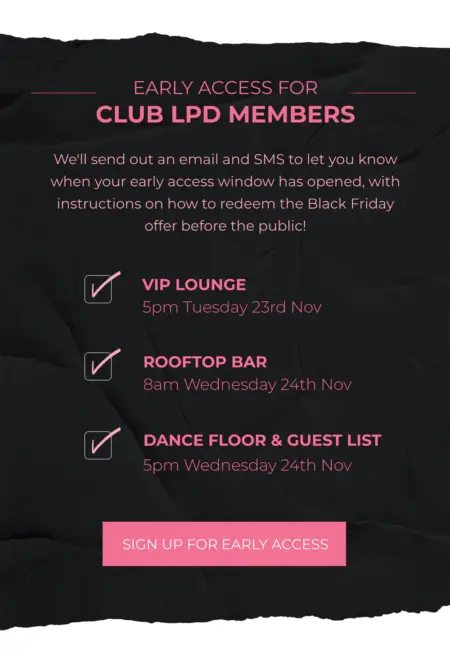
The higher the loyalty tier, the better the results: The top tier of customers converted at an astounding rate of 20.31%.
Make texting into a game—literally
The one SMS play Scott wishes he saw more brands pursuing is SMS gamification. Although his agency does more of this over email than text, the team is experimenting with creative ways to make SMS marketing interactive—and fun.
For certain clients, Scott’s agency aligns marketing efforts to themes that rotate every month or so, and each theme has a corresponding activity for subscribers. Over email, that might mean offering a gift or discount to the first 20 readers who find a hidden code in the email body, or selecting one winner at random out of everyone who solves a word game included in the email.
It makes them feel like they’re wanted and thought of, like they’re special, and that’s what keeps them coming back and opening your texts.
But sometimes the games take place on a custom landing page instead of in the email itself—for example, “Head to the landing page and find the hidden chocolate bar,” Scott says.
In those cases, “we might send a text out to allow SMS subscribers to play first, or to get their name in the hat quicker,” Scott explains. “People really like the ability to get in there first and not miss out.”
It’s that same early-access feel that makes people want to sign up for your SMS list in the first place, Scott points out: “It makes them feel like they’re wanted and thought of, like they’re special, and that’s what keeps them coming back and opening your texts.”
Scott’s team has also experimented with sending quizzes over SMS. For example, “‘Here’s 5 questions about the brand—the first person to reply back wins a gift,’ or ‘Every person who replies back to this text with the right answers will be in the running to win a prize,’” Scott explains.
People want to feel like they’ve earned something, instead of you just throwing money at them like every other brand in the whole world does.
Not only are people more likely to redeem their coupon codes or free gifts when they’ve done something to earn them—gamifying your owned marketing channels in this way can train subscribers to expect rewards for engaging with your emails and texts, rather than expect discounts before buying.
“It’s just psychology, right? If you work for something, you’re invested. When you’ve earned the reward, you’re more likely to use it—especially if there’s urgency attached as well,” Scott points out. “People want to feel like they’ve earned something, instead of you just throwing money at them like every other brand in the whole world does.”
“Sometimes it feels like it’s just, ‘Here’s your 10%”—oh, they didn’t use it? ‘Here’s your 15%,’ then, ‘Here’s your 20%,’” Scott continues. “But if you get them involved, if they know you’re giving them something they have to work for, every time you send something similar, they’re going to open those emails and texts quicker because they know what’s coming.”
6. Use two-way texting as a competitive advantage
Remember: SMS doesn’t have to be a one-way communication channel. You can also use SMS conversations to create a dialogue with subscribers and increase engagement.
Conversational SMS can really help you stand out in your subscribers’ mobile inbox and create a better customer experience, since many marketers are sticking to one-off SMS campaigns.
A lot of marketers look at SMS as a transactional form of communication. But the reality is that people can reply to texts in a much more seamless way than they would an email.
“A lot of marketers look at SMS as a transactional form of communication. But the reality is that people can reply to texts in a much more seamless way than they would an email,” Amoroso says. “Most people don’t reply to marketing emails that they get, but people will reply to texts that they get.”
Of course, customers don’t want to take the time to write out a thoughtful response, only for you to hit them back with “Great! Here’s our link!” as though their answer never mattered. Here are a few ideas for what to do instead.
Offer dedicated customer support via text
Amoroso says SMS customer support is a major competitive advantage for ecommerce brands.
“A lot of ecommerce businesses don’t have the customer support on the other end to manage and handle customer interactions, which can be annoying for a consumer. Personally, if you’re going to text me, and I reply, I’m going to expect a response,” he says.
You can use help desk apps like Gorgias, Zendesk, Kustomer, and Gladly with your SMS marketing platform to manage all customer communications in one place and power highly targeted campaigns, such as excluding customers with open support tickets from promotional campaigns.
SMS hot take: “You shouldn’t do SMS unless you have the ability to respond to people. It’s still going to drive revenue for your brand, but you’re going to lose customers over the fact that you’ve opened up this two-way communication channel, and are treating it like it’s one-way.”
Use two-way SMS to ask for feedback
Scott’s agency uses two-way SMS to gather valuable UGC and feedback from subscribers. In either SMS campaigns and flows, depending on the brand, “we say, ‘Hey, we’re online for the next hour—send us pictures of you eating our product,’” he explains. “Sometimes we’ll say, ‘Send us the best picture, get 10% off your next order,’ or a free gift—something like that.”
But Scott also uses two-way SMS to ask customers to share their honest insights and opinions. How was their last order? What’s their favorite product of yours? What could you be doing better?
It’s great to connect names and interact like normal humans do on a daily basis through text.
“It’s just building rapport,” says Scott, who recommends assigning an actual human to these kinds of SMS conversations. “It’s great to connect names and interact like normal humans do on a daily basis through text.”
With customers who’ve bought multiple times before, Zettler suggests using SMS as a way to foster engagement and ask for product feedback.
“Reach out to your loyal customers, such as people who have bought from you 5x, with a text message saying, ‘Thanks for completing your 5th purchase. We would love to know what’s your favorite thing and what’s your least favorite thing about what we’re doing,’” Zettler advises. “Use SMS to ask customers about what you offer, what you sell, and what we can do better with.”
It’s another avenue to try to engage with users, and it breaks through the noise of email. Plus, customers appreciate gestures like that from the brands that they’re most interested in.
“It’s another avenue to try to engage with users, and it breaks through the noise of email,” Zettler adds. “Plus, customers appreciate gestures like that from the brands that they’re most interested in.”
7. Find your balance with SMS communications—and stick to it
How often should you send marketing communications vs. just engaging with SMS subscribers? How much texting is too much, and how much is not enough? And what’s the best day of the week to send texts?
SMS experts offer a few words of advice to find a cadence of communication that fits your brand’s goals—and meets your customers’ expectations.
Don’t be scared to text on a regular basis
This one’s simple, Zettler says: Send more text messages.
“There are certainly some brands that text too much, which you don’t want to do. But others become so hesitant to send anything, they send nothing,” Zettler points out. “You don’t want that either, because if you build a list and you don’t send a text in 6 months, then there are all these subscribers you’ve accumulated who haven’t heard from you—and they may not even remember that they signed up.”
If you consistently nurture your SMS subscribers, they’re going to be a lot more receptive to your messages.
Think about it: If you sign up for a brand’s text messages, months pass without hearing from them, and then you receive a text from them about a sale, it’s going to be an unexpected and jarring experience.
On the other hand, “if you consistently nurture your SMS subscribers, they’re going to be a lot more receptive to your messages,” Zettler says.
Consider subscriber interests and engagement
Just because you’re texting consistently doesn’t mean you have to text all of your subscribers on the same cadence.
Amoroso urges marketers to consider subscriber engagement when deciding when to text. Similar to email, you can segment subscribers by their engagement with your SMS communications. It’s worth differentiating your strategy based on how often people are clicking your texts.
“You might have thousands of SMS subscribers who haven’t clicked on a text in 180 days, for example, but you’re still including them in your regular campaign blasts. That’s a waste of money,” Amoroso points out.
Instead, he recommends sending more frequent updates to engaged SMS subscribers, and saving special offers that might be more enticing for those who are unengaged.
You might have thousands of SMS subscribers who haven’t clicked on a text in 180 days, for example, but you’re still including them in your regular campaign blasts. That’s a waste of money.
“It’s not like email, where you have to sunset them and stop communicating with them or risk hurting your overall deliverability. It’s more about putting subscribers into a bucket where you might only text them on Black Friday, or another big sales day,” Amoroso explains.
You can also segment based on customer interests. Remember how Dana Rebecca Designs segments customers based on browsing and purchase behavior, like jewelry category preference and price point? The team might send out a text every day, but each text highlights a different jewelry category and targets a different segment of subscribers—bracelets and bracelet browsers on Monday, necklaces and necklace buyers on Tuesday, and so on.
“Maybe there’s overlap, but segmentation is what makes it so we don’t have to send 5 texts in a row to our full list in order to hit every product category,” Peterson explains—and it’s also what ensures the people receiving more frequent texts will actually be excited to receive them.
SMS hot take: “Marketers aren’t being as efficient with their SMS marketing as they could be. They’re looking at the total revenue generated from it, rather than the earnings per message sent, which is the most important metric to look at.”
Stick to the middle of the week
Is there a day of the week in which SMS recipients are particularly happy to hear from you? While our data didn’t reveal huge differences, generally speaking, SMS engagement tends to drop on Mondays and tick up midweek (Tuesday-Thursday).
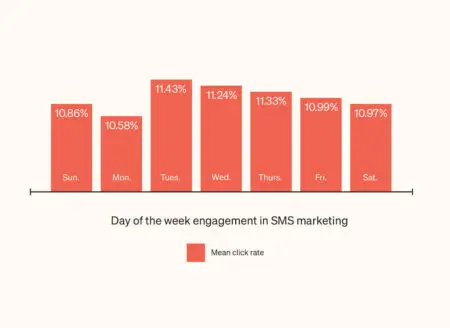
Mean CTRs for Tuesday-Thursday campaigns (11.33%) also outperformed weekend campaigns (10.84%).
8. Track your performance—and adapt accordingly
Good news: Compared to a lot of marketing channels, SMS performance is notoriously easy to track.
Trade in open rates for engagement metrics
It’s common knowledge, these days, that the high open rates often cited in SMS marketing are a vanity metric. Most people open a text simply to get rid of the notification on their phone, but it doesn’t mean they actually read it—let alone engage with it.
Instead, experts recommend focusing on the following SMS metrics to understand whether your efforts are paying off:
- Subscribe rate/list growth rate
- Click-through rate
- Unsubscribe rate
- Revenue per recipient
- SMS ROI (“incremental gross profit after campaign credit costs and contribution margins,” Scott explains)
- Flow vs. campaign revenue
Which ones matter the most? Well, that depends on what you’re trying to accomplish—not only with your SMS marketing strategy more broadly, but also with each individual SMS effort.
“It’s not the same for every send,” Peterson points out. For example, “if it’s a new launch, I’m really focused on revenue. If it’s educational or emotional, then I just like to see that they’re clicking through to the site and we’re driving traffic. If it’s July, I’m probably sending more conversational-type texts than promotional texts, vs. in February, I’m more focused on driving traffic to the site.”
Of course you always want revenue. But it’s important to look at the total picture.
“Of course you always want revenue,” Peterson says. “But it’s important to look at the total picture.”
Prioritize A/B testing
Sappington’s team uses SMS A/B testing most often for experimenting with automation timeframes. With a cart abandonment flow, for example, “we might see if a quick text an hour after the abandonment occurs works better than waiting 2 days,” he says. “With texting, a lot of the testing happens on that journey level, where we’re trying to figure out the impact of timing.”
But Homestead also tests variables like discount vs. no discount, flowery vs. direct copy, and where the links are pushing traffic to.
With texting, a lot of the testing happens on that journey level, where we’re trying to figure out the impact of timing.
To optimize click-through rates, Amoroso recommends A/B testing different segments to see what type of messaging works best for each audience.
For example, “instead of running an A/B test to your entire SMS list, segment them into returning customers vs. never purchased,” he suggests. “What might increase CTR for returning customers might not work with your never-purchased contacts, and vice versa.”
Ryan O’Connor, director of growth, SmartBug Media, says brands using a unified SMS and email marketing platform like Klaviyo should A/B test key flow messages with both an email and an SMS version. “Oftentimes one platform performs differently depending on the brand and where the customer is in their journey,” he points out.
In the first 6 months of their SMS program, Dana Rebecca Designs A/B tested variables like copy length, SMS vs. MMS, and more to solidify their SMS strategy. Since then, they haven’t experimented with A/B testing in SMS as much as they have in email, but Peterson is looking forward to testing how texts perform differently based on what time they go out.
SMS hot take: “A lot of SMS marketing is just trial and error. Even when you think you know this is going to be the thing that’s going to move the needle in your SMS program, you have to keep evolving and trying new things.”
Take your SMS program to the next level
Want to go beyond the basics? We cover everything you need to know to make sure you start from a place of value and end with loyal, lifelong customer relationships in this ecommerce SMS marketing series. Check out:
- What is SMS marketing?
- SMS marketing strategies
- SMS marketing examples
- Top SMS marketing software
- SMS integrations
FAQs about SMS marketing best practices
What should be included in SMS marketing?
The core elements of effective SMS marketing include a sense of urgency, directness, personalization, a balanced send cadence, and value or exclusivity.
What is the best way to make sure your SMS marketing is effective?
To make sure your SMS marketing is effective, follow SMS marketing best practices including differentiating email from SMS by reserving SMS for urgent, time-sensitive communications; personalizing your communications whenever possible with advanced customer segmentation; providing value beyond discounts, such as by making SMS a VIP channel or offering two-way SMS conversations; and tracking your performance, then adjusting your strategy accordingly.
What are the main rules for SMS marketing?
Do use SMS in tandem with email. Don’t use email and SMS the same way, or separate them into two different platforms. Do keep SMS messaging short and actionable. Don’t lose your brand voice. Do make it feel exclusive. Don’t rely on discounts. Do send consistently. Don’t send too much. Get the complete list of dos, don’ts, and SMS plays for maximizing ROI.



